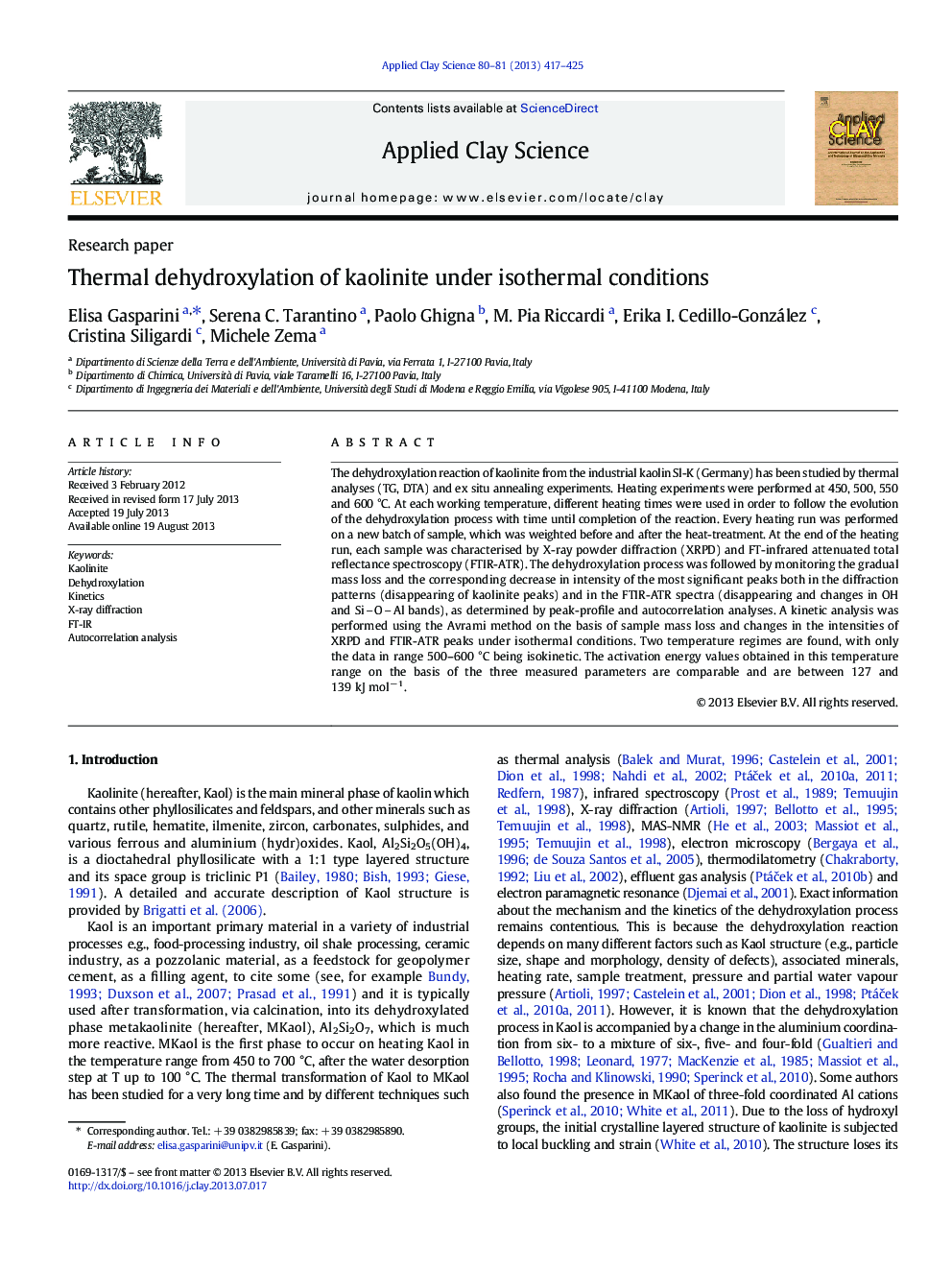| Article ID | Journal | Published Year | Pages | File Type |
|---|---|---|---|---|
| 8047572 | Applied Clay Science | 2013 | 9 Pages |
Abstract
The dehydroxylation reaction of kaolinite from the industrial kaolin Sl-K (Germany) has been studied by thermal analyses (TG, DTA) and ex situ annealing experiments. Heating experiments were performed at 450, 500, 550 and 600 °C. At each working temperature, different heating times were used in order to follow the evolution of the dehydroxylation process with time until completion of the reaction. Every heating run was performed on a new batch of sample, which was weighted before and after the heat-treatment. At the end of the heating run, each sample was characterised by X-ray powder diffraction (XRPD) and FT-infrared attenuated total reflectance spectroscopy (FTIR-ATR). The dehydroxylation process was followed by monitoring the gradual mass loss and the corresponding decrease in intensity of the most significant peaks both in the diffraction patterns (disappearing of kaolinite peaks) and in the FTIR-ATR spectra (disappearing and changes in OH and SiOAl bands), as determined by peak-profile and autocorrelation analyses. A kinetic analysis was performed using the Avrami method on the basis of sample mass loss and changes in the intensities of XRPD and FTIR-ATR peaks under isothermal conditions. Two temperature regimes are found, with only the data in range 500-600 °C being isokinetic. The activation energy values obtained in this temperature range on the basis of the three measured parameters are comparable and are between 127 and 139 kJ molâ 1.
Related Topics
Physical Sciences and Engineering
Earth and Planetary Sciences
Geochemistry and Petrology
Authors
Elisa Gasparini, Serena C. Tarantino, Paolo Ghigna, M. Pia Riccardi, Erika I. Cedillo-González, Cristina Siligardi, Michele Zema,
